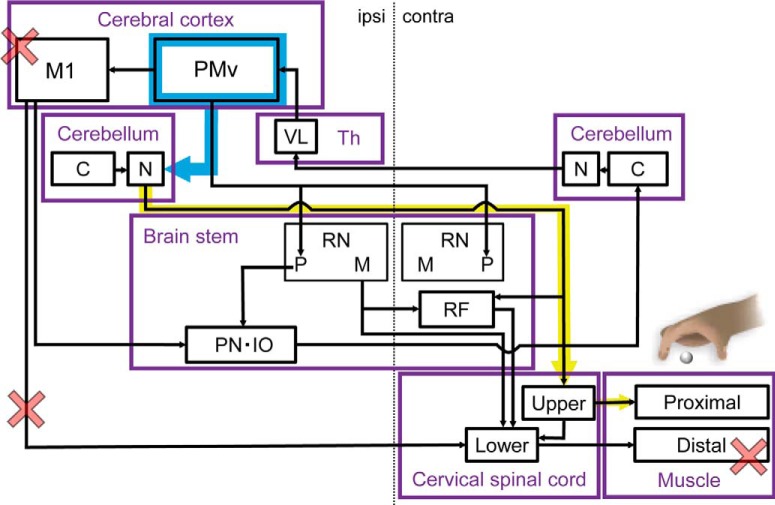Figure 8.
Conceptual diagram illustrating a hypothesis of the functional recovery mechanism based on neuroanatomical reorganization after M1-lesion induction. After induction of the M1 lesion, motor paralysis of distal hand muscles was caused by the dysfunction of corticospinal tracts projecting from M1 to the lower cervical spinal cord (red cross). When dexterous movements were recovered 3 months after M1 lesion, projections from the ip-PMv to ip-FN were strengthened (blue arrow). Reinforcement of the premotor cortical-cerebellar pathway may accompany activation of fastigial-spinal projections (yellow arrow), by which indirect cortico-spinal projections may be reorganized for functional compensation of distal muscle movement in upper extremities (via the acquisition of compensatory movement using proximal muscles). contra, Contra-lesional side; Th, thalamus; VL, ventral lateral nucleus; RN, red nucleus; P, parvocellular; M, magnocellular; C, cortex; N, nucleus; RF; reticular formation; PN, pontine nucleus; IO, inferior olivary nucleus.

